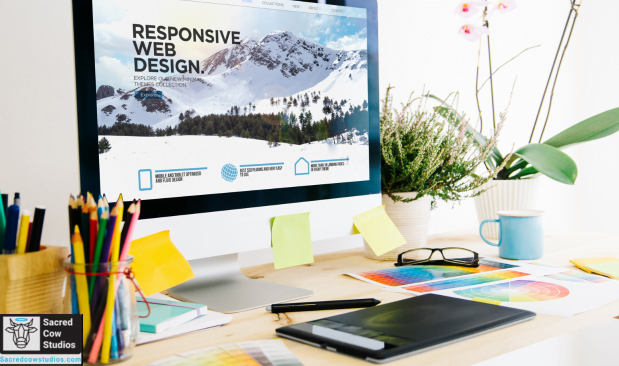
Are you interested in web designing in Los Angeles but don’t know where to start? If so, you’ve come to the right place. In this blog post, we’ll be providing you with a step-by-step guide to help you learn web designing from scratch.
Web designing is the process of creating and designing websites. It involves a range of skills, including graphic design, user experience design, and coding. Learning web designing can seem daunting at first, but with the right guidance, it can be a fun and rewarding experience.
Before we go into the details, it’s essential to understand the basics of web designing. Here are some of the key concepts you should know:
- HTML
Hypertext Markup Language (HTML) is the standard markup language used to create web pages. It provides the structure of a web page, including headings, paragraphs, and lists. - CSS
Cascading Style Sheets (CSS) is a sheet language used to add visual styling to web pages. It controls the layout, colors, and fonts of a web page. - JavaScript
JavaScript is a programming language used to add interactivity to web pages. It can be used to create animations, dynamic forms, and more. - Responsive Design
Responsive design is an approach to web design that makes web pages adapt to different screen sizes, such as those on mobile devices. - User Experience Design
User experience (UX) design is the process of designing websites with the user in mind. It involves creating intuitive navigation, clear calls to action, and easy-to-use interfaces.
Now that we’ve covered the basics, let’s dive into the step-by-step guide.
Step 1: Learn HTML
HTML is the foundation of web designing. It provides the structure and content of a web page. To get started with HTML, you’ll need a text editor and a web browser. There are many online tutorials and resources available to learn HTML, such as W3Schools.
Step 2: Learn CSS
CSS is used to add visual styling to web pages. It allows you to control the layout, colors, fonts, and more. To get started with CSS, you’ll need to have a basic understanding of HTML. There are many online tutorials and resources available to learn CSS, such as Codecademy.
Start by learning the basic CSS syntax, such as selectors, properties, and values. These will allow you to change the color of text, add a background image, and more. Once you’ve mastered the basics, you can move on to more advanced topics, such as layout, responsiveness, and animations.
Step 3: Learn JavaScript
JavaScript is used to add interactivity to web pages. It can be used to create animations, dynamic forms, and more. To get started with JavaScript, you’ll need a text editor and a web browser. There are many online tutorials and resources available to learn JavaScript, such as MDN Web Docs.
Start by learning the basic JavaScript syntax, such as variables, functions, and loops. These will allow you to create simple programs and add interactivity to web pages. Once you’ve mastered the basics, you can move on to more advanced topics, such as object-oriented programming and jQuery.
Step 4: Learn Responsive Design
Responsive design is an approach to web design that makes web pages adapt to different screen sizes, such as those on mobile devices. To get started with responsive design, you’ll need to have a basic understanding of HTML and CSS. There are many online tutorials and resources available to learn responsive design, such as Responsive Web Design Basics by Google.
Start by learning the basic concepts of responsive design, such as media queries and flexible grids. These will allow you to create web pages that look great on any device. Once you’ve mastered the basics, you can move on to more advanced topics, such as responsive images and fluid typography.
Step 5: Learn User Experience Design
User experience (UX) design is the process of designing websites with the user in mind. It involves creating intuitive navigation, clear calls to action, and easy-to-use interfaces. To get started with UX design, you’ll need to have a basic understanding of web design principles. There are many online tutorials and resources available to learn UX design, such as UX Design for Beginners by CareerFoundry.
Start by learning the basic principles of UX design, such as user research, wireframing, and prototyping. These will allow you to create websites that are easy to use and navigate. Once you’ve mastered the basics, you can move on to more advanced topics, such as user testing and analytics.
Step 6: Practice, Practice, Practice
The best way to learn web design is to practice. Create your own projects, experiment with different techniques, and challenge yourself to create something new. The more you practice, the more you’ll learn. There are many online resources available to help you practice web designing, such as Codepen, where you can share your projects and get feedback from other designers.
Conclusion
Learning web designing can be a fun and rewarding experience. By following this step-by-step guide, you’ll have the tools and resources you need to get started. Remember to take it one step at a time, practice, and never stop learning.
As a creative web designing agency in Los Agency, Sacred Cow Studios offers a range of services including website designing, SEO, and app development. We are dedicated to creating stunning websites that not only look great but also function smoothly and provide an exceptional user experience. With our expertise and guidance, you can take your web designing to the next level and build websites for your businesses that stand out.

